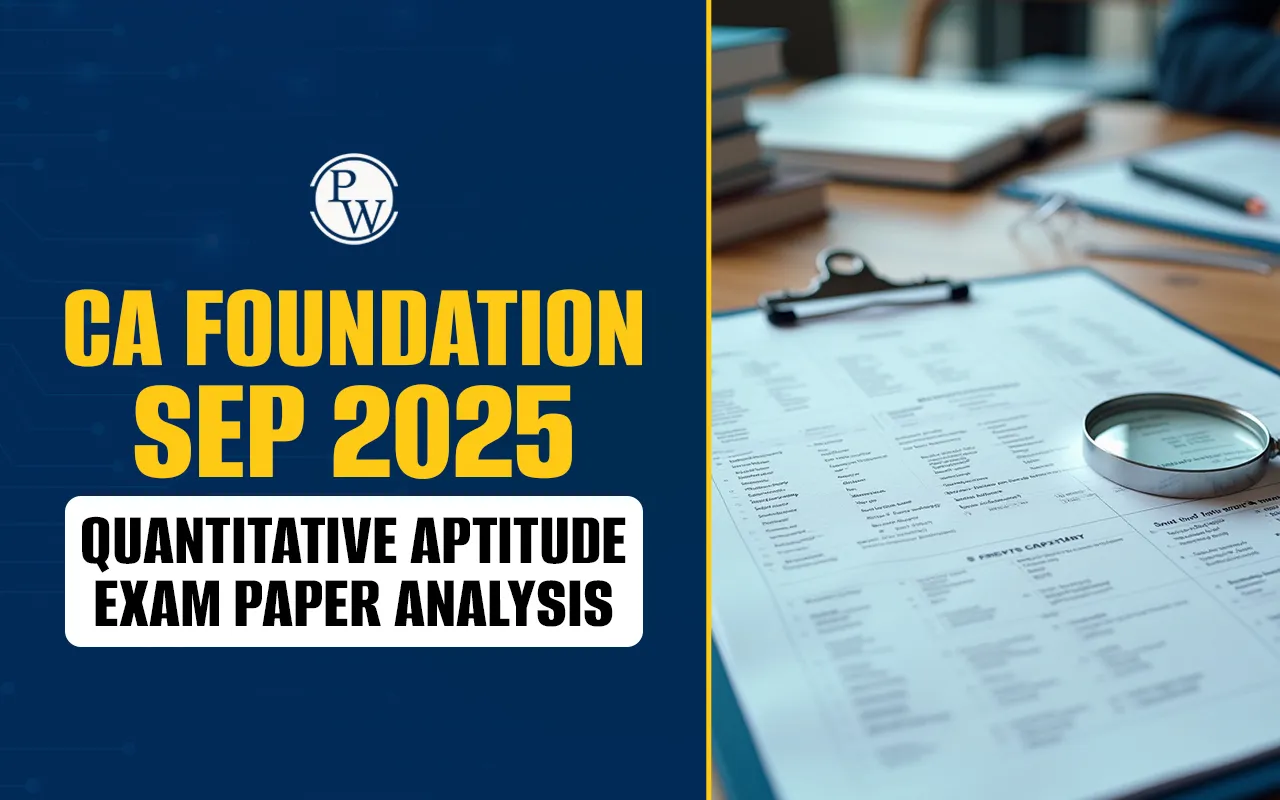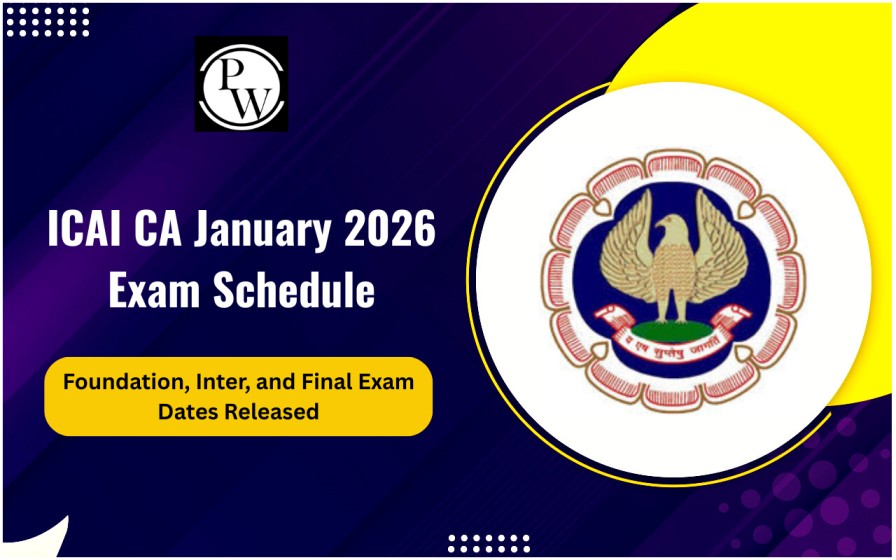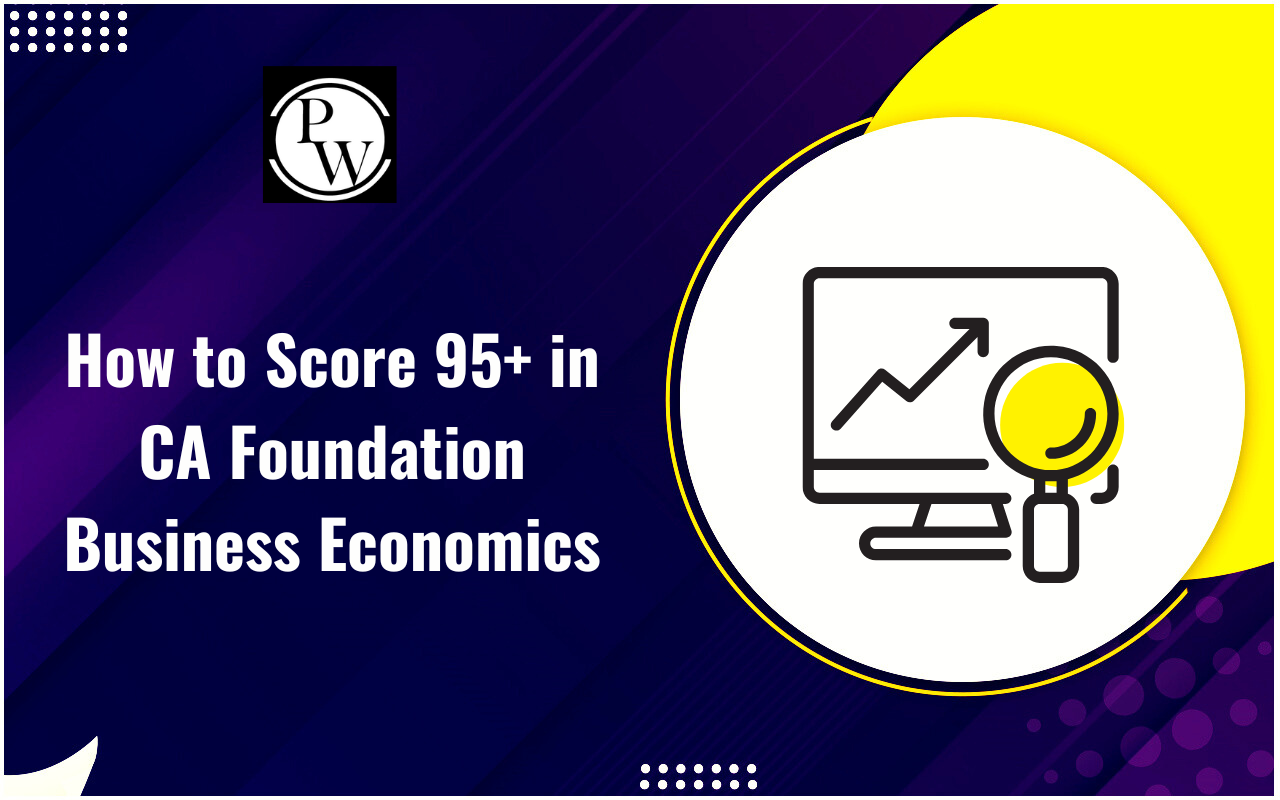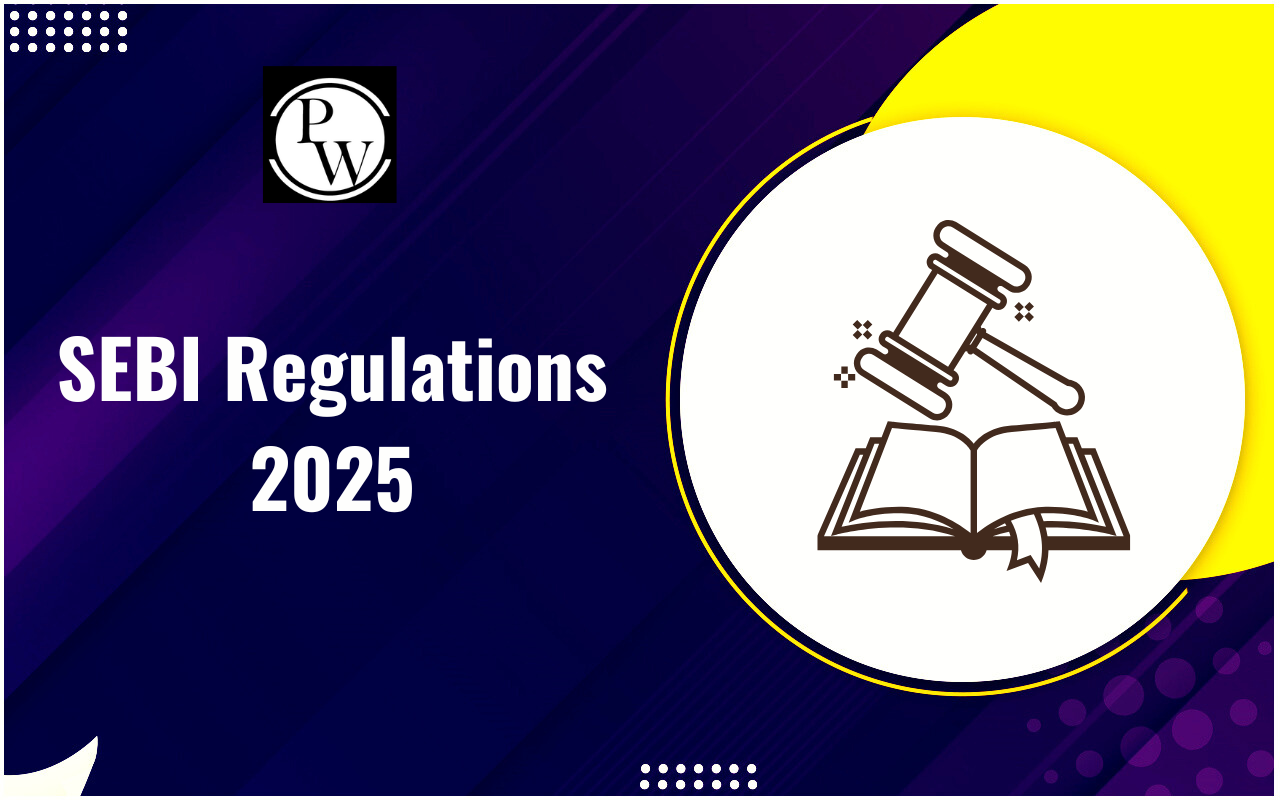

CA Foundation Sep 2025 Quantitative Aptitude exam analysis shows that the paper was challenging. It was tougher than in past years. The paper was designed to be confusing and lengthy. It tested students' nerves and time management. But students who prepared well found many easy questions. The paper covered all the usual topics. However, there were some small changes in how marks were given. Below, we’ll look at the CA Foundation Sep 2025 Quantitative Aptitude Exam Analysis in more detail.
CA Foundation Sep 2025 Quantitative Aptitude Exam Analysis Overview
The exam followed ICAI’s usual structure but included some unexpected changes in marks allocation. Statistics was more confusing than Mathematics, while Logical Reasoning was relatively easier.
| CA Foundation Sep 2025 Quantitative Aptitude Exam Analysis Overview | |
| Section | Main Points |
| Exam Date | 20 September 2025 |
| Paper Name | Quantitative Aptitude |
| Mathematics | Some questions were very tricky and lengthy. The first question was very hard. This made the start of the exam stressful for students. But many questions were still easy if students knew the basics. |
| Logical Reasoning | This part was easier than the last exam. Questions were simple and direct. Students found it a scoring section. |
| Statistics | This section was harder than the Mathematics part. Questions were confusing and needed careful reading. There was a tricky question on sampling. |
| Overall | The paper was challenging but passable. A student with good preparation could score 60 to 70 marks. Many students said they got between 40 and 60 marks. This shows that passing was possible. |
CA Foundation Sep 2025 Quantitative Aptitude Exam Paper Difficulty Level
The CA Foundation Sep 2025 Quantitative Aptitude paper was seen as difficult. Below, we’ve mentioned the main reasons why:
-
Tough Beginning: The exam started with a very hard question on partnership profit-sharing. This was a surprise. It asked for time implicitly, which is not normal. This created a lot of stress for students right at the start.
-
Lengthy and Confusing: Many questions were long. They were written in a confusing way. This was done to make students feel anxious. The paper was not easy to finish on time. Students needed good time management. This was a key part of the CA Foundation Sep 2025 Quantitative Aptitude Exam Analysis.
-
Tricky Statistics: The Statistics section was particularly hard. The questions were not just about formulas. They were twisted and needed deep thought. For example, a question about sampling for index numbers was confusing. It was a detail from the study module, not a main topic. This made the Statistics section feel tougher than the Mathematics part. This is an important point in the CA Foundation Sep 2025 QA paper difficulty level.
-
Subtle Changes: There were slight changes in the marks. For example, a ratio/proportion question was worth 3 marks instead of 4. Inequality questions increased from 2 to 3 marks. These small changes also affected students' approach. The overall CA Foundation QA Sep 2025 exam analysis shows this.
Topic-Wise Quantitative Aptitude Exam Paper Review
This CA Foundation Quantitative Aptitude paper review gives a detailed look at each section. The paper had three parts: Mathematics, Logical Reasoning, and Statistics.
| Topic-wise Quantitative Aptitude Exam Paper Review | ||
| Chapter | Marks Allocated | Remarks |
| Mathematics of Finance | 14 marks | This was a very important topic. It had many questions. A question on recurring investment was straightforward. |
| Permutation & Combination | 4 marks | Standard questions were asked. |
| Sequence & Series | 4 marks | Standard questions were asked. This part of the CA Foundation Sep 2025 Quantitative Aptitude Exam Analysis was good news for many students. |
| Set, Relation, Function | 4 marks | Easy questions on properties like transitivity were asked. |
| Calculus | 4 marks | Standard questions were asked. |
| Ratio & Proportion | 3 marks | This was less than the usual 4 marks. |
| Inequality | 3 marks | This was more than the usual 2 marks. |
| Logical Reasoning | 20 marks (4 chapters, 5 each) | This section was easier than the previous exam. Questions were direct. |
| Statistical Description of Data | 5 marks (of 9 marks) | This was a mix of theory and problems. |
| Sampling | 4 marks | This section had a very confusing question about the sampling method for index numbers. This was a challenging part of the CA Foundation Quantitative Aptitude paper review. |
| Central Tendency & Dispersion | 10 marks | Questions were standard and a good score could be made here. |
| Probability | 5 marks | There was a very tricky question about finding the median of a probability mass function (PMF). The ICAI CA Foundation QA paper solutions 2025 for this question will be very helpful. |
| Theoretical Distribution | 5 marks | Standard questions were asked. |
| Correlation & Regression | 5 marks | One question had twisted wording but was actually about positive correlation. This is a key point in the CA Foundation QA Sep 2025 exam analysis. |
| Index Number | 5 marks | This included the tricky question about sampling. |
CA Foundation Sep 2025 Quantitative Aptitude Important Topics and Memory-Based Questions
Students should focus on key topics for future exams. The CA Foundation Sep 2025 QA paper solutions 2025 will provide a detailed look at these. This is a very useful part of the CA Foundation Sep 2025 Quantitative Aptitude Exam Analysis.
| Important Topics and Memory-based questions CA Foundation QA Sep 2025 | |
| Important Topics | Memory-Based Questions (Examples) |
| Mathematics of Finance | Finding the future value of a recurring investment with an annual interest rate of 7%. A question on Compound Annual Growth Rate (CAGR) that was simpler than it looked. |
| Quadratic Equations | A problem involving roots α and β. Students had to find the sum of roots or related expressions. The easiest way was to substitute the roots directly. This is a smart trick to use. |
| Inequalities | Problems that were long but simple. Students just had to check the validity by substituting points. It was time-consuming but not difficult. |
| Sequences & Series | Questions on the common difference of an A.P. and the sum of a G.P. Also, a question on the sum of natural numbers that are divisible by 13. These were standard questions. |
| Logical Reasoning | Questions on blood relations and seating arrangements were easier than before. They were straightforward. |
| Statistics | A question on which sampling technique to use for creating index numbers. The module suggested random sampling. This was a memory-based question, CA Foundation QA Sep 2025, that surprised many. |
| Correlation | A question where the wording was twisted. It asked about two variables moving in the same direction. The answer was positive correlation. It tested if students understood the basic concept, not just the formula. |
CA Foundation Sep 2025 Quantitative Aptitude Exam Paper Student Feedback
The student reaction CA Foundation Sep 2025 QA exam was mixed but mostly positive. Many students were scared at first. The very first question was tough. Below, we’ve mentioned the Quantitative Aptitude Exam Paper Student Feedback:
| CA Foundation Sep 2025 Quantitative Aptitude Exam Paper Student Feedback | |
| Score Range | Most students who were talked to at the exam center said they would score between 40 and 60 marks. This shows that passing the paper was very possible. The students who had a good grasp of the CA Foundation QA important topics 2025 felt confident about their chances. |
| Time Management | The paper was lengthy. Students who managed their time well did better. They did not spend too much time on a single tough question. They moved on to easier ones. This was a smart strategy. |
| Passing is Achievable | The overall feeling was that the paper was challenging but not impossible. The easy questions were enough to help a student pass. The students who had not prepared well scored around 40 marks. They were already looking at the next attempt. This is part of the student reaction CA Foundation Sep 2025 QA exam. |
| Logical Reasoning was a savior | Students found the Logical Reasoning section to be a relief. The questions were simple. |
| Importance of Module | Some of the tricky questions came from small details in the ICAI module. This shows that students must read the whole book carefully. The question of sampling for index numbers is a perfect example of this. The CA Foundation QA trend analysis 2025 shows that ICAI is now testing more than just the main topics |
CA Foundation Sep 2025 Quantitative Aptitude Exam Analysis FAQs
Was the CA Foundation Sep 2025 QA paper very difficult?
Which section was the easiest?
What were the important topics?
How did students react?











